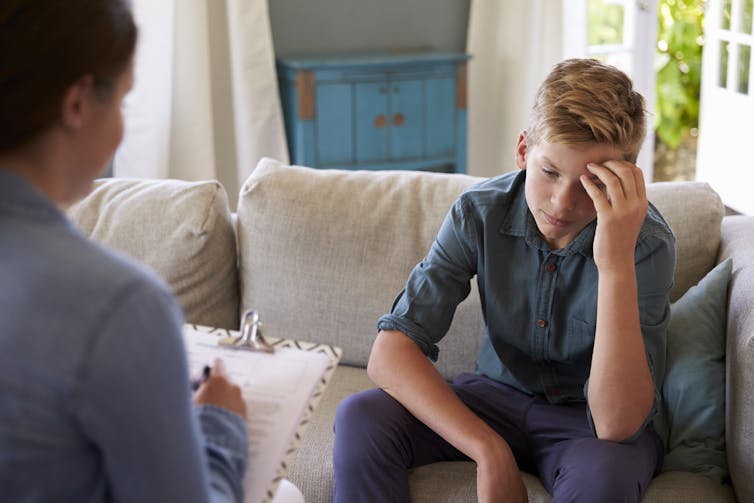Mental health disorders among England's young has risen in recent years
Tamsin Newlove-Delgado, University of Exeter
One in four young women aged 17-19 have a mental disorder, according to the latest figures from the NHS, and one in five have anxiety or depression, or both. For all children and young people aged five to 19, the new data shows that one in eight has a mental disorder.
The figures come from a survey led by NHS Digital. The team, of which we were a part, surveyed more than 9,000 children and young people across England and their parents. Where parents agreed, teachers were asked to complete questionnaires about the child. Clinical “raters” used this information to decide whether children were classified as having a mental disorder, using internationally agreed criteria. This system means that the information is more complete, accurate and rounded than many mental health surveys.
Working in the dark
We have waited a long time for these figures. The last national survey took place in 2004 and was published in 2005. Since then, the country has experienced an economic crisis (2007-2008) and, subsequently, years of austerity. Young people also face different challenges, such as interacting with the digital world. This long gap means that people planning mental health services and support for young people have essentially been working in the dark.
The rise in mental disorders since 2004 is not as high as some might have predicted (among five- to 15-year-olds, it rose from one in ten to one in nine), but the survey findings are still alarming.
In a class of 25, two to three children are likely to have a mental disorder. In a friendship group of ten young women, two are likely to have anxiety or depression, or both. That’s a tremendous burden to carry when starting out in adult life. It’s also a huge challenge for parents, teachers, doctors and society.
The latest report from the Children’s Commissioner for England suggests that many children with mental health disorders are still not getting timely access to the specialist help they could benefit from.

Social media
So what’s causing this rise in mental health disorders? Frustratingly, the survey cannot directly answer this question. In many conversations about child mental health, the finger has been pointed at social media, austerity and exam pressures. But the survey is a snapshot in time and therefore cannot explain the cause of this rise in mental health disorders in England’s young.
The survey shows that young people with a mental health disorder spent more time on screens and had more concerns about social media than those without a mental health disorder, but it’s not possible to say which way causality runs. Is excessive use of social media a result of a mental health disorder or a cause of it? For example, are young people who are feeling isolated, anxious or have social difficulties more likely to spend time on screens as a refuge from the outside world, or does social media use open up young people to bullying that then causes anxiety or depression?
Studies over time rather than snapshots will be better placed to answer these questions. There are also important research questions about how we build on positive aspects of social media and find ways to address potential negative effects. What could we be doing better or more to help young people negotiate a digital world?
We urgently need an answer to these questions to find ways to improve the mental health of young people.
Tamsin Newlove-Delgado, Clinical Lecturer in Public Health, University of Exeter
This article is republished from The Conversation under a Creative Commons license.
Comments
Post a Comment